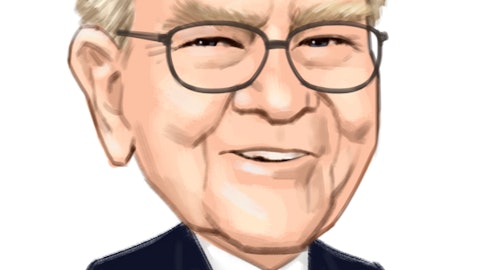A lot of people like to “cheer” for higher prices in the short-term.
Yet for the long-term net buyer, it’s lower prices that can provide the ultimate benefit. This allows you to purchase more shares, which creates more income and a greater underlying earnings claim.
Personally when I see lower prices, that’s when I tend to get more interested.
That’s why I recently put out an article highlighting 8 dividend paying securities that had declined in share price by at least 15% over the last year.
This article takes a deeper look at these same 8 securities.

All eight companies have kept their dividend payout the same or increased it in the last year, thus resulting in significantly higher dividend yields.
Here’s a look at each of the eight securities highlighted, along with their respective share price declines from April of 2015:
– Kohl’s Corporation (NYSE:KSS) – 42% lower
– Union Pacific Corporation (NYSE:UNP) – 25% lower
– Franklin Resources, Inc. (NYSE:BEN) – 23% lower
– Archer Daniels Midland Company (NYSE:ADM) – 23% lower
– CSX Corporation (NASDAQ:CSX) – 22% lower
– American Express Company (NYSE:AXP) – 20% lower
– Norfolk Southern Corp. (NYSE:NSC) – 19% lower
– Eaton Vance Corp (NYSE:EV) – 16% lower
It doesn’t always work out, but in my view it makes for a lower “investment bar.” That is, the companies don’t have to perform as well as they had in the past, and investment returns could still be reasonable. This is fueled by the higher starting dividend yield to go along with a now lower valuation as well.
For this article I’d like to expand upon those securities a bit. Let’s begin.
Kohl’s Corporation (NYSE:KSS)
Incidentally, I recently covered Kohl’s here. If you have a bit of time and happen to be interested in the business, I’d recommend reading that post to get a fuller picture.
However, for this article I can break down the basic points. Think of what follows as being a “cliff notes” version of the original.
Basically I’d consider the quality of the company to be “good” or else “very good” but not quite exceptional. It’s not really in the same league as some of your dividend growth stalwarts out there.
However, the current valuation makes it a bit more interesting. Earnings have come down recently (6% to 20% depending on if you look at accounting or adjusted earnings) but so has the price. In fact, the price has come way down – more than 40% in the last year.
This has enabled some reasonable looking components to start looking much more attractive. For instance, a year ago the dividend yield sat at 2.4%. Based on a share price of just above $43, the current mark is closer to 4.6%. So even if you don’t have the same growth rate expectation, it’s clear that the starting yield offers a “leg up.” Even without growth, a 4.6% beginning yield is attractive in today’s low rate environment.
Next you have the valuation. Instead of a company trading at 18 times earnings, it’s now closer to 11 or 12 depending on which earnings figure you look at. This has a couple of important ramifications.
First, whatever the future business growth happens to be, you stand a much better shot of capturing it with a security trading at 12 times earnings as compared to 18 times. The average earnings multiple for Kohl’s Corporation (NYSE:KSS) over the past decade has been around 13. If the business does well but the P/E ratio goes from 18 to 13, investors don’t get to capture that business performance and indeed could see capital depreciation. Alternatively, if the business performs marginally but goes from a P/E ratio of 12 to 13, investors stand to do just fine.
Perhaps just as important is the benefit of share repurchases at a lower rather than higher valuation. When a company utilizes share repurchases, it collects a portion of everyone’s underlying earnings claim and then buys out some of the partners in the business. For the remaining shareholders, you’d much prefer for Kohl’s to buy out past partners as a discount as compared to a premium. This allows the company to retire more shares and increases the per share growth as a result.
These things matter. In the link mentioned above I go into detail demonstrating how 1.5% company-wide growth could turn into 8% to 10% annualized shareholder gains for today’s investor. Effectively the much lower share price makes future returns easier to formulate. This doesn’t guarantee success, but it is the sort of thing that I like to look for in a potential partnership decision.
Follow Kohls Corp (NYSE:KSS)
Follow Kohls Corp (NYSE:KSS)
Receive real-time insider trading and news alerts
Union Pacific Corporation (NYSE:UNP)
If you think about the continental U.S. as a monopoly board, there are four major railroads: Union Pacific and BNSF in the west and Norfolk Southern and CSX in the east. Naturally there are smaller track operators, but as far as the largest of railroads go, those are your options.
If I had to guess, those exact companies – or at the very least their underlying assets – will be around much longer than you or I. Although the tracks are not literally monopolies, the barriers to entry effectively make it so. Think about what it would require if you wanted to set up a competing route from say Cleveland to Miami or Los Angeles to Omaha.
Aside from the massive amounts of upfront capital that it would require, you’d be further stymied by getting approval to go through the backyards of thousands of properties. Moreover, you’d have to make the case that doing so would be in the best interest of all those parties. To be honest, I’m not sure if it could be done and even if it could I’m even more uncertain as to if you’d want to try. The infrastructure is already there.
That’s the good news with railroads – the monopoly like business model allows for reasonable economic rents to collected. And often it’s a benefit to the consumer in the way of more efficient transportation.
There are a couple of things that I don’t like as much about the industry. For one, even with an entrenched set of assets, it’s still a highly capital intensive business. Unlike say Visa Inc (NYSE:V) which might have to add some servers, with Union Pacific you have to manually repair and keep up thousands of miles of track each year.
This has an important effect. As Warren Buffett indicated in his most recent shareholder letter the depreciation charge for railroads is usually far short of the capital outlays required to keep the railroad running properly. As such, accounting earnings often overstate the “true economic earnings.”
Additionally, there exists a factor of cyclicality in shipping goods that isn’t quite as pronounced in other businesses. The economy ebbs and flows, and thus a railroads profits tend to as well.
With these thoughts in mind, I like to be cautious when I contemplate the future for a company like Union Pacific. Personally that means coming up with a “no growth” situation and seeing what shareholders could expect from that outcome.
If Union Pacific Corporation (NYSE:UNP) the business did not grow at all, that could mean earning $4.8 billion annually for the next decade – 0% business growth, but still an enormous amount of profits. With a net payout ratio around 70%, you would expect the company to keep paying dividends and repurchasing shares. So while the business would not be growing in this scenario, the per share metrics very well could be.
Investors might still anticipate 4% to 6% annual returns in this situation. You have a ~3% dividend yield, coupled with a few percent of per share growth as a result of the share repurchase program. And if growth does come along, investor returns could be much higher. The lower the valuation (as created by a much lower share price), the lower the “investment bar.”
Follow Union Pacific Corp (NYSE:UNP)
Follow Union Pacific Corp (NYSE:UNP)
Receive real-time insider trading and news alerts
Franklin Resources, Inc. (NYSE:BEN)
Once again there are things to like with this security and things that perhaps create a cause for concern. In the last year shares were trading above $50, now the number is under $40.
The question you have to ask yourself is whether or not you believe the business is that much worse off, or if the current price could be offering an opportunity.
Let’s start with some things that you might not like. For one thing, the company’s assets under management have been declining steadily as of late – from $880 billion in March of 2015 down to $742 billion in March of 2016. If your business is managing assets, that’s not the sort of thing that seems like good news.
In conjunction with this recent development has been the move away from high-cost funds and toward low-cost, passively managed ETF’s. The question becomes whether or not this is temporary or ongoing.
Personally I think something in the middle is likely. It’s sort of reminds me of General Mills, Inc. (NYSE:GIS) selling cereal. The main business of breakfast cereal has been in decline for years, but General Mills still makes a ton of money by selling Cheerios. However, the company has also recognized this trend and thus is expanding its offerings into yogurts and the like.
I think Franklin Resources, Inc. (NYSE:BEN) is in the same boat. It doesn’t sell cereal, but I think its legacy business is going to be in decline for quite some time. Perhaps not linearly, but given enough time. People will still use the “bread and butter” funds – some people never look at their 401(k) choices, much less demand lower cost options. So the company stands to continue making money from that endeavor. But to create growth, I think the business model needs to switch up a bit – something that, at least profitability-wise, isn’t yet a known factor.
That’s the troubling news, and certainly the share price has reflected this sentiment as of late. The good news is that the company has tons of cash. And I do mean tons. Last quarter reported cash and cash equivalents of $8.125 billion against total liabilities of $3.7 billion. The company could pay off everything and still have over $4 billion in liquid walking around money. And that’s just the cash component – other assets basically double the total asset amount.
This incredible balance sheet flexibility has allowed the company to pay an increasing dividend for over three decades to go along with substantial share repurchases and special dividends. Franklin Resources long dividend history makes it 1 of just 50 Dividend Aristocrats – stocks with 25+ years of consecutive dividend increases.
The dividend yield isn’t that impressive – although the lower share price has certainly made this higher – but it is exceptionally well covered.
Follow Franklin Resources Inc (NYSE:BEN)
Follow Franklin Resources Inc (NYSE:BEN)
Receive real-time insider trading and news alerts
Archer Daniels Midland Company (NYSE:ADM)
This leading agriculture company is another security that I’d classify as a “low bar” type of investment. In fiscal year 2014 the company earned around $3.40 per share and it’s “only” expected to generate $2.50 or so per share this year; as such, the share price is now 23% lower than it had been.
Yet you still have a company that is paying out less than half of its earnings in cash, with a strong commitment toward both dividends and share repurchases. The starting yield is around 3.2%, which has been a common theme so far. Over the past decade the average yield has been closer to 2% instead of 3%. Granted part of this is a result of an increased payout ratio, but part of it comes from the lower share price and higher dividend payments (a 7% increase this year).
Although the company is a Dividend Aristocrat – having paid an uninterrupted dividend for 84 years and increased it for the last 41 years – a 2% yield just doesn’t grab your attention like a 3% might. Archer-Daniels-Midland stock looks more appealing now than in the past.
The question that you have to ask yourself is whether or not the business is now 20%+ worse off. In the short-term certainly the lower earnings reflect this, in the long-term it’s not as clear as people continue to eat and demand the products created by Archer-Daniels-Midland’s crops.
Archer Daniels Midland Company (NYSE:ADM)’s combination of an above-average yield, value, and favorable long-term growth prospects make it a current favorite of The 8 Rules of Dividend Investing.
Follow Archer-Daniels-Midland Co (NYSE:ADM)
Follow Archer-Daniels-Midland Co (NYSE:ADM)
Receive real-time insider trading and news alerts
CSX Corporation (NASDAQ:CSX)
The story here is quite similar to Union Pacific, as detailed above. Granted not perfectly comparable – Union Pacific is a westward railroad, while CSX operates on the eastern half the of U.S. You have the positives – a monopoly-like business from a well-established firm – with the negatives – high capital outlays and general cyclicality.
CSX’s results in particular have been weighed down by a dramatic decline in coal volumes. Just a year ago the midpoint estimate for earnings during 2016 were expected to be about 28% higher than they were in 2014. Today, the estimates have come all the way down to being flat or even representing a slight decline. So certainly there are concerns and short-term earnings pressure.
Yet once again, I find that creating a “lesser” scenario can help illuminate whether or not the current value proposition is interesting. Incidentally, I just recently provided a look at what a “no growth” investment in CSX Corporation (NASDAQ:CSX) could look over the next decade. Basically if the company earns the same amount as it had – $1.8 billion annually – and pays out 75% or so of its profits as dividend and share repurchases, investors could anticipate 4% to 6% gains.
That may not sound especially compelling, but remember this assumes zero growth from this point forward.
If the company is able to generate a bit of growth, 5% annualized gains could easily turn into double-digit results. Which, incidentally, is actually reasonably below the spectacular results of the investment in the past decade.
Follow Csx Corp (NASDAQ:CSX)
Follow Csx Corp (NASDAQ:CSX)
Receive real-time insider trading and news alerts
American Express Company (NYSE:AXP)
There’s a common theme here. Excellent businesses with short-term concerns. Of course short-term concerns can become long-term issues, but for the moment all of the companies mentioned above are still generating substantial profits.
The “concerns” for American Express are real…
The company recently lost its partnership with Costco Wholesale Corporation (NASDAQ:COST) and there’s the possibility for more losses to come. Moreover, the company’s competitors are very present.
In the last year American Expresses’ share price is down about 20% and its down 35% since its peak in 2014.
Incidentally, there’s a bit of precedent for this: the last two times the share price was cut in half investors did quite well. Naturally that doesn’t mean that it has to work out this time, but it does give a bit of solace to the idea that much lower share prices are often opportunities for investment when you’re dealing with strong companies.
Even with the current hiccups the company is still expected to generate $5 billion annually. I think that’s an easy thing to forget if you’re just looking at the stock price. People see the share price drop by 20%, and it’s easy to project this image out into the future. Yet a share of stock represents an honest claim on the underlying profits of the business.
Here as well I have completed a “no growth” scenario, and once more the results are reasonable. The company’s dividend yield isn’t quite as high as some of the other securities mentioned, but the current payout ratio only makes up about a fifth of the total profits.
Even better is that American Express as not capital intensive in the way that a railroad is, so that leaves ample room for substantial share repurchases.
If American Express Company (NYSE:AXP) could generate just over $5 billion annually for the next decade and pay out roughly 60% of its profits as dividends and share repurchases, investors could see annual returns on the magnitude of 5% to 7% annually. And remember, that’s without the business getting better at all.
From 2005 to 2015 American Express went from earning $3 billion to $5 billion. This assumes that the company doesn’t improve for the next 10 years.
Follow American Express Co (NYSE:AXP)
Follow American Express Co (NYSE:AXP)
Receive real-time insider trading and news alerts
Norfolk Southern Corp. (NYSE:NSC)
This is a case that is exceptionally similar to that of Union Pacific and even more so CSX as detailed above. The basic construct is in place: higher earnings were expected last year, and since that time the industry dynamics have soured. Norfolk Southern benefited greatly from its presence in the east and especially with carrying railcars full of coal. When you’re a coal producer trying to get your product from east to west, as an example, you don’t have many choices.
In good times, this makes for a booming railroad business. In lesser times, as seen by general declining demand and bankruptcies in the industry, this aspect can hurt the bottom line. Of course coal is the whole business for a coal producer, but only a portion of the business for Norfolk Southern Corp. (NYSE:NSC). Just to give you some context, coal made up about a fifth of Norfolk’s business last year, with intermodal shipments now making up a larger share.
At present shares trade with a dividend yield near 3%, a payout ratio under 50% and a valuation more or less in line with the security’s historical average.
Follow Norfolk Southern Corp (NYSE:NSC)
Follow Norfolk Southern Corp (NYSE:NSC)
Receive real-time insider trading and news alerts
Eaton Vance Corp (NYSE:EV)
Finally, we have Eaton Vance – an asset management firm with history dating back to 1924. The story here is quite similar to that of Franklin Resources.
The core offerings face long-term pressure, but in general ought to remain profitable for some time. For the company it’s about managing the possibility of lower profits in the long-term along with figuring out the next steps to keep adding value.
The discussion and awareness of fees continues to progress; good news for investors, not so good news for asset managers relying on fees.
The financial position isn’t quite as robust as that of Franklin Resources, but it shares many of the same characteristics. Namely, a solid dividend coupled with a robust share repurchase program. A lot of people fixate on Franklin Resources or T. Rowe Price Group Inc (NASDAQ:TROW) as the asset managers that have a long-standing dividend increase streak, but Eaton Vance Corp (NYSE:EV) has a similar length streak dating back to the 1980’s.
Follow Mirror Merger Sub 2 Llc (AMEX:EV)
Follow Mirror Merger Sub 2 Llc (AMEX:EV)
Receive real-time insider trading and news alerts
Final Thoughts
In short, the above names and details are not meant to be a comprehensive review.
It’s a starting point, not the end.
Whether or not the above names become solid investments depends on a great deal of factors, many of which are not yet known.
Each security currently has a “concern” or issue related to its business model – ranging from lower shipping volumes and lost customers to general longevity apprehensions and downbeat earnings.
These items should not be taken lightly, and you’d expect the respective managements to be addressing them appropriately (and hopefully vigorously).
Yet the lower prices that are caused by this sentiment can often provide an opportunity. I’m reminded of a Warren Buffett quote from his 1990 shareholder letter:
“The most common cause of low prices is pessimism – sometimes pervasive, sometimes specific to a company or industry. We want to do business in such an environment, not because we like pessimism but because we like the prices that it produces. It’s optimism that is the enemy of the rational buyer.”
All eight companies listed above have certainly seen their fair share of pessimism as of late. However, that doesn’t automatically make them a good investment, continuing from Buffett:
“None of this means, however, that a business or stock is an intelligent purchase simply because it is unpopular; a contrarian approach is just as foolish as a follow-the-crowd strategy. What’s required is thinking rather than polling. Unfortunately, Bertrand Russell’s observation about life in general applies with unusual force in the financial world: “Most men would rather die than think. Many do.”
The trick is considering whether or not the current concerns are long-term issues, or else small blips in what has been a storied and profitable history.
If it’s the latter, the lower short-term share prices could very well offer long-term appeal.
Follow Warren Buffett's Berkshire Hathaway
Disclosure: This article is originally published on Sure Dividend by Eli Inkrot.





